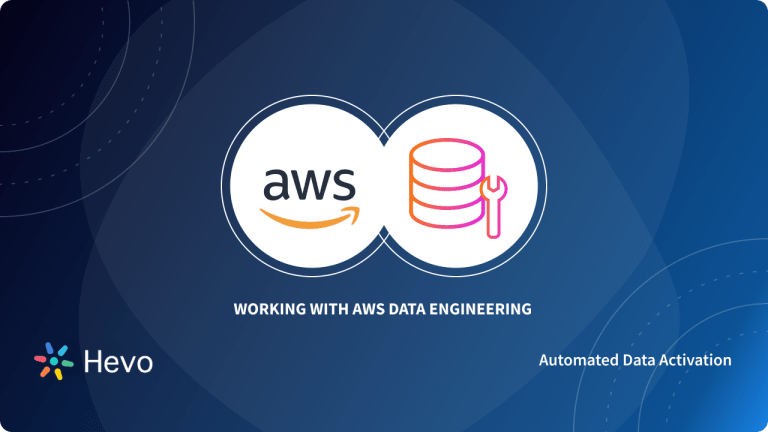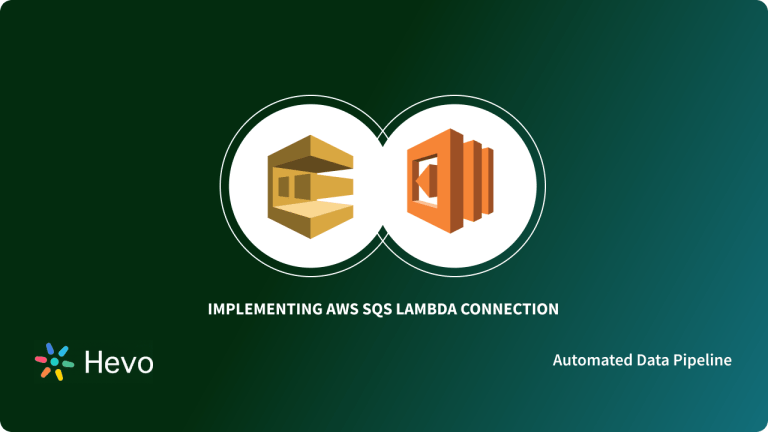AWS has become an essential aspect of everyday life, and no matter where we are, we interact with software almost daily, e.g., Mobile Phones, ATMs, the Internet, etc. Since the software has become such an integral part, it is necessary to ensure that this software should always work and be available to users. The area of studying failures is known as Fault-Tolerance. Fault Tolerance refers to a system’s capacity to continue functioning even if part of the system’s components fail.
In this blog post, you will discuss various AWS Fault Tolerance services that can help you build fault-tolerant applications.
Table of Contents
What is the AWS Fault Tolerance Architecture?
When running a machine, faults are inevitable. Faults can occur due to network outage, system crash, running out of memory, malware, etc.
AWS Fault Tolerance architecture provides:
- A vast amount of IT infrastructure.
- Computing Instances, and
- Storage that you can use to create fault-tolerant systems.
AWS systems are self-reliant to failures and can automatically recover from the failures.
A single service is not fault-tolerant; you have to use various services to make the application fault-tolerant. We will discuss the various Fault-tolerant components of AWS tools in the next section.
Are you having trouble migrating your data into Redshift? With our no-code platform and competitive pricing, Hevo makes the process seamless and cost-effective.
- Easy Integration: Connect and migrate data into Redshift without any coding.
- Auto-Schema Mapping: Automatically map schemas to ensure smooth data transfer.
- In-Built Transformations: Transform your data on the fly with Hevo’s powerful transformation capabilities.
- 150+ Data Sources: Access data from over 150 sources, including 60+ free sources.
You can see it for yourselves by looking at our 2000+ happy customers, such as Postman, Cure.Fit, and Pelago.
Get Started with Hevo for FreeUnderstanding AWS Fault Tolerance Components
In this section, you will understand the various AWS Fault Tolerance features and services offered by AWS. AWS provides several components or services that can create fault-tolerant systems. Some of these AWS Fault Tolerance components are:
- Auto Scaling
- Elastic Load Balancing
- Elastic IPs
- Reserved Instances
- Elastic Block Store
- Relational Database Service
- Simple Storage Service
- Simple Queue Service
- Route 53
1. Auto Scaling
Auto-Scaling is the concept of automatically scaling up the machines (compute resources) as demanded by load, thereby safeguarding the machines from failures. Autoscaling is a powerful option that can be easily applied to your applications.
Auto-Scaling allows you to set rules that will automatically scale up or down your compute resources. The rules can be:
- Launch server instances when the CPU threshold increases beyond a certain point. The AWS Cloudwatch component can obtain the CPU metrics.
- When the number of servers is above(or below) a certain number, then launch(or terminate) the servers.
Auto Scaling generally follows the rule of N+1 redundancy. N+1 redundancy rule is a popular strategy for making instances always available. N+1 dictates that there should be N+1 resources available when N resources are sufficient to handle the anticipated load.
Auto Scaling will automatically detect the failure of instances and launch replacement instances.
2. Elastic Load Balancing
Elastic Load Balancer is another AWS product that distributes several servers’ incoming traffic (EC2 instance).
The Elastic Load balancer uses a hostname on which the incoming traffic arrives, and then it redistributes those traffic to the pool of Amazon instances.
Elastic Load Balancing can detect unhealthy instances within its pool of Amazon EC2 instances and automatically reroutes traffic to healthy instances.
AutoScaling and Elastic Load Balancing is a great combination to create a fault-tolerant system as ELB reroutes traffic to healthy clusters. In contrast, Auto-Scaling ensures that there are always healthy clusters available.
3. Elastic IPs
Elastic IP Addresses are the variable public IPs and can be mapped to any EC2 instances within the particular EC2 region.
These Elastic Addresses are associated with an AWS account and are not specific to instances. Hence, EIPs make a significant contribution to designing fault-tolerant applications.
In a short period, an elastic IP address can be removed from a failing instance and mapped to a replacement instance.
4. Reserved Instances
Reserve Instances are reserved for future failover to ensure that an instance is always available in case of a shortage of resources on the AWS side.
AWS has massive hardware resources available, but these resources are finite. The best way to create a fault-tolerant system is to reserve such instances beforehand to avoid last-minute unavailability.
With Reserved Instances, you reserve computing capacity in the Amazon Web Services cloud. Doing this can bring lower prices. More significantly, it will increase your chances of receiving the computing capacity you require in the context of fault tolerance.
5. Elastic Block Store
Amazon Elastic Block Store (EBS) is the block storage volume used with Amazon EC2 instances. EBS persists the data outside the compute instances and persists the data independently from the life of the compute instances.
Amazon EBS volumes are hard drives that may be added to a running Amazon EC2 instance. Amazon EBS and Amazon EC2 machines are used in conjunction with one another when building fault-tolerant systems.
Amazon EBS stores the data outside the EC2 instances. Hence, any failure to EC2 instances can not impact the data. The EBS can be attached to any other running instances. EBS creates the backup of the data by using the technique called Snapshot. These snapshots can be stored in Amazon S3, another Simple Storage Service that is highly available and fault-tolerant.
6. Relational Database Service
RDS (Amazon Relational Database Service) is another AWS service that offers the framework for running relational databases in the cloud. Amazon RDS offers several features to enhance the reliability of the database in building fault-tolerant systems.
Amazon RDS creates a backup of your database and transaction log time-to-time to provide data recovery in case of failure. The backups can help to recover any data loss suffered from any failures. These database backups will be stored by Amazon RDS unless deleted.
7. Simple Storage Service
Amazon S3, or Amazon Simple Storage Service, is a simple online service that delivers exceptionally durable, fault-tolerant data storage. Amazon S3 stores the data on multiple regions and multiple devices so that in case of failure of any data center, the data is still accessible. Amazon Web Services is responsible for maintaining availability and fault tolerance within all the applications.
Amazon S3 has a versioning feature that allows you to track and retain any previous versions of data/objects stored and protects against any unintentional modifications done to the data. Amazon S3 is an essential part of creating a fault-tolerant system within AWS.
8. Simple Queue Service
SQS (Amazon Simple Queue Service) is a fault-tolerant and distributed messaging system that serves as the foundation for any fault-tolerant application. It is mainly used to send messages in case of failures and any abrupt things happening on applications. Amazon SQS stores the messages in Queue and retains them for up to four days unless read/deleted by the application.
9. Route 53
Amazon Route 53 is a highly available and scalable DNS web service from the stack of Amazon Web Services. It is designed to provide a reliable and cost-effective way to route end users to Internet applications by resolving the Domain name with the numeric IP address that allows computers to interact with each other.
You can configure DNS health checks using Amazon Route 53, then use Route 53 Application Recovery Controller to continually monitor and govern your applications’ capacity to recover from failures.
Conclusion
In this blog post, you have discussed various services from Amazon Web Services that can help you build a fault-tolerant application. You have also discussed AWS Fault Tolerance components and how these AWS Fault Tolerance services provide an ecosystem to build fault-tolerant applications.
Hevo Data is an Automated No-Code Data Pipeline that offers a faster way to move data from 150+ Data Sources, including 60+ Free Sources, into your Data Warehouse such as Amazon Redshift. Hevo is fully automated and hence does not require you to code.
FAQ on AWS Fault Tolerance
Does AWS have fault tolerance?
Yes, AWS provides fault tolerance through features like redundant infrastructure, automatic failover, and multi-Availability Zone deployments to ensure service continuity during failures.
What is fault tolerance in the cloud ecosystem?
Fault tolerance in the cloud ecosystem refers to the ability of a system to continue operating without interruption despite failures or errors in components, typically through redundancy and automated recovery mechanisms.
How do I increase fault tolerance in AWS?
To increase fault tolerance in AWS, use services like Elastic Load Balancing, Auto Scaling, and multi-AZ deployments. Implement data replication across regions and use AWS backup solutions to ensure data durability and availability.
What is fault tolerance vs disaster recovery in AWS?
Fault tolerance ensures continuous operation despite component failures, often through redundancy and failover mechanisms. Disaster recovery involves strategies and processes for recovering from catastrophic failures, including backups and recovery plans.









